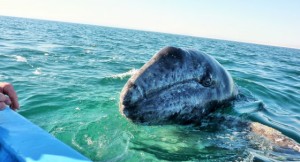
March 19, 2015 –Only a few days ago we were in Guerrero Negro and the gang was setting off to see the whales and hopefully touch some. Well they had a show for sure, I believe everyone touched whale and many were spit on as well. The Grey whales were really putting on a show, just spectacular. After the group returned after lunch we headed off to San Ignacio and Rice & Beans, home to the purported best Margaritas on Baja.

We arrived on schedule, with some wind but still hot and after setup we had an excursion to the center of town, with a wonderful plaza, Mission and 300 year fig trees from India. After the excursion the entire group headed off for dinner to try out the Margaritas, and they were not disappointed. Dinner was good, the staff worked hard to serve all these folks. The next day we were off again to Playa Santispac to finish off the 1st week of the Baja Amigos tour.
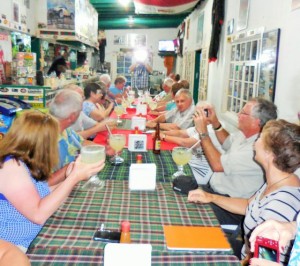
Day 6 and we arrived on the beach and boy was it busy. Baja Winters was gathering up their January and February tours and heading north. With our Caravan, Baja Winters and the regulars we had over 30 RVs on the beach. Great for the vendors and the weather could not have been better. Soon after arrival we took the Paddleboard and Kayak off the roof and into the water. Folks were in the water, swimming, trying out the toys and exploring the new beach. Day 2 on the beach and we had much more of the same, I was out as usual on the water before the sun came up, so peaceful and tranquil. What a great day everyone had, the sea remained calm and it was warm. Later we had a pot luck, but first some new, Beer can races! Who knew how much fun that could be, we will do this again at Tecolote. Bruce and Marian joined us for the Pot Luck and supplied the wood for a fire afterwards. The food was terrific and the gang had a good time for sure. Lots of Baja memories made from 2 days on Playa Santispac.
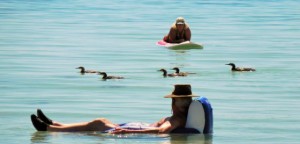
Week 2, Day 1 and we continued our journey southbound to Loreto, the birthplace of the Californias. The sunshine and heat continued with highs in the 30s C or mid 80s F. A small cruise ship was in port and the town was alive with tourists. It took a while (as it always does) but we got everyone into the RV Park and then headed off with some to Del Borracho, a Texas Saloon on the way to San Javier. The hamburgers were wonderful, as were the fries. Joyce was given some rattlesnake eggs and we had some voluteers on the saddles, lots of fun. The next morning we were off we had an excursion to the San Javier Mission, the drive certainly qualifies as an adventure, both up and down the mountain. San Javier is a very special place and folks will remember their journey for years to come. Later that evening we hosted our Baja Fiesta Dinner at the Giggling Dolphin, Ubaldo and his staff do a superb job as do the Musicians. Again more memories made on Baja.

Tomorrow we are off to Ciudad Constitucion heading for the baech Playa Tecolote.

Did you know?
The Vizcaino Biosphere Reserve was declared a world heritage site in 1993. Know as the Vizcaino Biosphere Reserve, it lies just south of the 28th Parallel in the northern part of the State of Baja California Sur and has been declared a protected natural area. The El Vizcaíno Biosphere Reserve, was first created in 1988, is located in Mulegé Municipality in northern Baja California Sur, at the center of the Baja California Peninsula between the Pacific Ocean and Sea of Cortez (or Gulf of California). With a landmass of over 9,625 square-miles (24,930 square km), it is the largest wildlife refuge in Mexico.

The Vizcaino Biosphere Reserve is composed of slightly more than one million acres that not only include a majestic desert but also two important lagoon complex -Ojo de Liebre / Guerrero Negro and Laguna San Ignacio – that annually host our most famous visitors: the Gray and the Humpback whale. Every winter hundreds of these creatures arrive in order to give birth and care for their offspring in the warm, safe waters of the peninsula’s lagoons. These natural sanctuaries are also enriched by the presence of other marine mammals such as the Vitulina Seal, the Elephant Seal and the California Sea Lion.
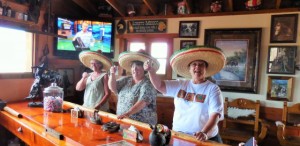
Among the more prominent terrestrial mammals are the timid pronghorn antelope and the highly prized bighorn sheep. Around 200 species of aquatic and migratory birds nest or hibernate in the Vizcaino Reserve, which represents one of the last natural refuges of the Royal Eagle, the Fisher Eagle, and the Peregrine Falcon -all endangered and now protected by the Mexican government. To experience in the immensity of the thorny vegetation characteristic of the Vizcaino is truly unique, especially when everything from the tiniest lichen to the most colossal Cardon cactus is in full bloom, inundating the desert with ephemeral colors during the brief periods of rain. The conjunction of arid terrain and the Pacific Ocean coastline occurs at the singularly beautiful and nearly virgin beaches of Bahia Asuncion, Punta Abreojos, Punta Prieta and Bahia Tortuga, where hundreds of sea turtles come to spawn. The small fishing villages nearby also offer the opportunity to taste simple but delicious dishes of shrimp, abalone and the delicately shredded meat of the manta ray.

It wasn’t too many years ago when there was no Vizcaino only a truck stop and perhaps a small restaurant and tienda (mini-super), but not much else. Over the last few years the town has grown considerably, and now offers some necessary services that can come in handy for the Baja traveler. Vizcaino really serves two distinctly different clients. It serves the travelers of Baja Highway One heading up and down the Peninsula, and it serves the 2,000 residents of Bahia Tortugas, located on the Pacific Ocean about 100 miles to the west. Other truckers and travelers choose to stop at Vizcaino as a pit stop, instead of stopping 45 miles to the north at Guererro Negro. Some who can’t quite make it the 47 miles to San Ignacio, are forced to stop here for fuel or supplies, simply due to bad planning. Services available in Vizcaino include gasoline, markets, restaurants, and even a couple of small hotels and an RV Park with all the bells and whistles.

The Vizcaino Biosphere Reserve is truly a natural wonder -a desert full of surprises! It is a sanctuary for wild fauna and endangered species, the proud possessor of both ancient and modern historical monuments, and the home of kind, hospitable and hard-working people.

Sebastián Vizcaíno
Sebastian Vizcaino, the 17th century Spanish explorer to whom the region owes its name, discovered the native Cochimies inhabiting the most arid, isolated and least populated areas in Mexico. Later missionaries would leave an enduring reminder of their presence in the sober altarpiece of the San Ignacio Kandakahayang Mission, whose facade, built in 1728, is the most richly ornamented in all the peninsula. Sebastián Vizcaíno (1548–1624) was a Spanish soldier, entrepreneur, explorer, and diplomat whose varied roles took him to New Spain, the Philippines, the Baja California peninsula, the California coast and Japan.
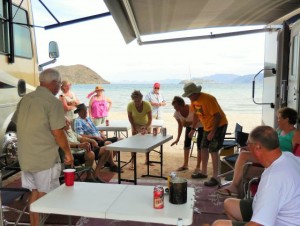
Early career
Vizcaíno was born in 1548, in Extremadura, Spain. He saw military service in the Spanish invasion of Portugal during 1580–1583. Coming to New Spain in 1583 (Mexico), he sailed as a merchant on a Manila galleon to the Philippines in 1586–1589. In 1587, he was on board the Santa Ana as one of the merchants when Thomas Cavendish captured it, robbing him and others of their personal cargoes of gold.

The Californias
In 1593, the disputed concession for pearl fishing on the western shores of the Gulf of California was transferred to Vizcaíno. He succeeded in sailing with three ships to La Paz, Baja California Sur in 1596. He gave this site (known to Hernándo Cortés as Santa Cruz) its modern name and attempted to establish a settlement. However, problems of resupply, declining morale, and a fire soon forced its abandonment.

In 1601, the Spanish Viceroy in Mexico City, the Conde de Monterrey, appointed Vizcaíno general-in-charge of a second expedition—-to locate safe harbors in Alta California for Spanish Manila galleons to use on their return voyage to Acapulco from Manila. He was also given the mandate to map in detail the California coastline that Juan Rodríguez Cabrillo had first reconnoitered 60 years earlier. He departed Acapulco with three ships on May 5, 1602. His flagship was the San Diego and the other two ships were the San Tomás and the Tres Reyes.

On November 10, 1602, Vizcaíno entered and named San Diego Bay. Sailing up the coast, Vizcaíno named many prominent features such as the Santa Barbara Channel Islands, Point Conception, the Santa Lucia Mountains, Point Lobos, Carmel River and Monterey Bay (thus obliterating some of the names given these same features by Cabrillo in 1542). He was the first person in recorded history to note certain ecological features of the California coast such as the Monterey cypress forest at Point Lobos. The commander of the Tres Reyes, Martín de Aguilar, became separated from Vizcaíno and continued up the coast to present-day Oregon as far as Cape Blanco and possibly to Coos Bay. One result of Vizcaíno’s voyage was a flurry of enthusiasm for establishing a Spanish settlement at Monterey, but this was ultimately deferred for another 167 years after the Conde de Monterrey left to become Viceroy of Peru and his successor was less favorable. A colonizing expedition was authorized in 1606 for 1607, but was delayed and then cancelled in 1608.
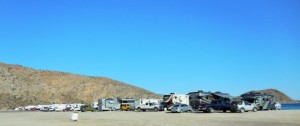
Japanese relations
In 1611, Vizcaíno carried a Japanese delegation led by Tanaka Shōsuke from Mexico back to Japan. In an ambassadorial capacity, Vizcaíno met with the shōgun Tokugawa Hidetada and his father, the retired first shogun, Tokugawa Ieyasu, founder of the Tokugawa dynasty. However, diplomacy soured due to Vizcaíno’s disregard of Japanese court etiquette. After taking his leave in 1612, he surveyed the east coast of Japan and searched for two mythical islands called Rico de Oro and Rico de Plata. Failing to find them, he returned to Japan. In 1613, Vizcaíno accompanied the Japanese embassy led by Hasekura Tsunenaga to Mexico. In Acapulco, Vizcaíno was seriously injured in a fight with the Japanese, as recorded by 17th-century Aztec historian Chimalpahin in his journal, “Annals of His Time.” The Japanese entourage continued to Mexico City, and embarked a ship at Veracruz bound for Europe.
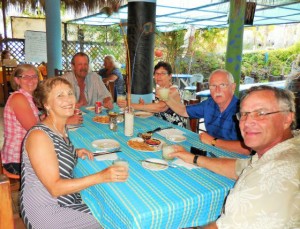
Dutch conflict
On November 11, 1616, Vizcaíno commanded 200 men at the port of Salagua against an attack by 200 Dutch pirates. In the afternoon, both sides ran out of ammunition. Vizcaíno’s men retreated after the Dutch returned with more ammunition.
Death
Sebastián Vizcaíno died on 1624 in Mexico City, New Spain (Mexico), he was 76 years old.


